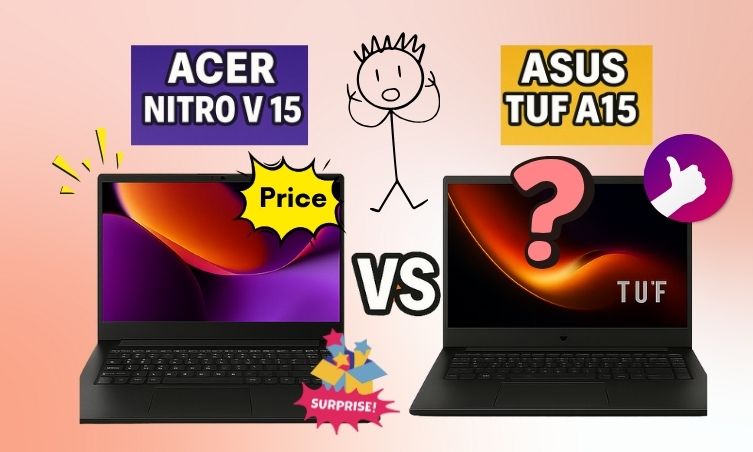If you’ve been searching for a laptop that balances performance, portability, and price, the ASUS Vivobook 15 (13th Gen, H-series) lineup deserves your attention. With sleek looks, powerful Intel H-series processors, and everyday usability, these laptops are crafted for students, professionals, and anyone who wants solid performance without breaking the bank.
Today, we’re looking at two specific models:
- ASUS Vivobook 15 (Intel Core i7-13620H, 1TB SSD, 16GB RAM) – X1502VA-BQ1298WS
- Get Amazon
- ASUS Vivobook 15 (Intel Core i5-13420H, 512GB SSD, 16GB RAM) – X1502VA-BQ836WS
- Get Amazon
Both share the same design and features but differ in processor power and storage, making them ideal for slightly different users. Let’s break it down.
Also Read: The ₹56K Laptop Everyone’s Talking About – ASUS Vivobook 16X Review
1. Performance Power: i7-13620H vs i5-13420H
- Intel Core i7-13620H: Perfect for users who need extra muscle for multitasking, heavy spreadsheets, programming, or light creative tasks like video editing. With more cores and higher turbo speeds, this laptop ensures smooth performance under pressure.
- Intel Core i5-13420H: A more balanced option for students, casual users, and professionals who want strong day-to-day performance at a friendlier price point. It handles multitasking and productivity apps easily but at slightly lower power demand.
Simply put, go for the i7 model if you push your laptop harder; choose the i5 model if you need reliable performance without overpaying.
2. Storage Options: 1TB vs 512GB SSD
- The i7 version offers a spacious 1TB SSD, giving you plenty of room for large files, media libraries, and professional workloads.
- The i5 version comes with a 512GB SSD, still fast and sufficient for most everyday users who rely on cloud storage or don’t keep heavy files locally.
Both SSDs ensure lightning-fast boot times and app launches, but the i7 model clearly has the edge for storage-heavy users.
3. Shared Features That Make Both Models Shine
- 16GB RAM for smooth multitasking.
- 15.6-inch FHD display (60Hz) for comfortable viewing.
- Backlit keyboard – great for working in low-light setups.
- Windows 11 + Office Home 2024 + 1 Year M365 Basic pre-installed, so you’re ready to work from day one.
- Sleek Quiet Blue finish with just 1.7 kg weight, making it easy to carry around.
These are not stripped-down budget laptops; they’re premium builds at accessible prices.
Also Read: Lenovo Yoga Slim 7 Review: Smart AI-Powered Laptop for Modern Professionals
4. Value for Money: Why They Beat the Competition
When compared to other laptops in the same price segment:
- The i7 model often costs less than competing ultrabooks with similar specs, giving you professional-grade power at a mid-range price.
- The i5 model hits the sweet spot for students and professionals, offering just the right balance of performance, storage, and affordability.
Where many other brands cut corners on RAM or pre-installed software, ASUS gives you the full package – future-ready specs, a durable design, and productivity tools included.
5. Which One Should You Buy?
- Pick the i7 (X1502VA-BQ1298WS) if you want top-tier multitasking, large storage, or plan to run heavier workloads.
- Pick the i5 (X1502VA-BQ836WS) if you’re a student, casual gamer, or office user looking for dependable performance at a better price.
Both laptops offer exceptional value and easily outperform many other brands at their price points.
Final Take
The ASUS Vivobook 15 H-series (13th Gen) laptops prove you don’t need to overspend to get premium features. Whether you choose the power-packed i7 or the value-friendly i5, you’re getting a laptop built for reliability, performance, and long-term usability.
If you’ve been hunting for the perfect balance of price and power, the Vivobook 15 is an easy recommendation.



